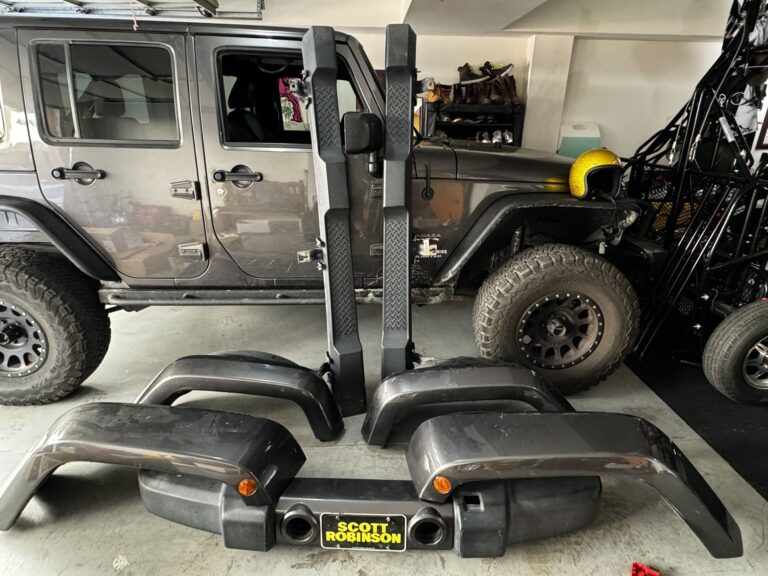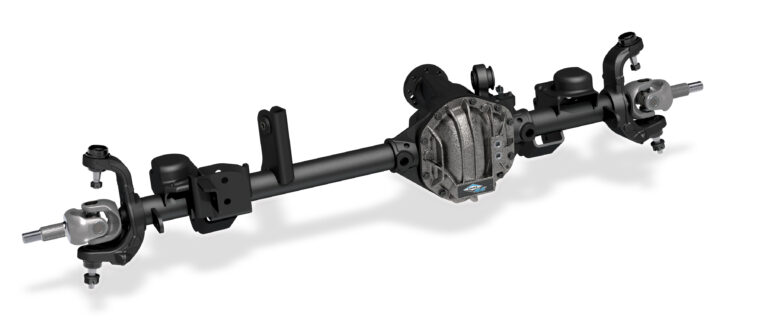1985 Jeep CJ7 For Sale: A Comprehensive Buyer’s Guide
1985 Jeep CJ7 For Sale: A Comprehensive Buyer’s Guide jeeps.truckstrend.com
For many automotive enthusiasts and off-road adventurers, few vehicles evoke as much nostalgia and rugged capability as the Jeep CJ7. And among the various iterations of this iconic 4×4, the 1985 model holds a particularly special place. As the final year of production for the beloved CJ7 before its evolution into the Wrangler (YJ), the 1985 CJ7 represents the culmination of a legendary era. It’s a vehicle that embodies freedom, adventure, and a no-nonsense approach to tackling any terrain. For those looking to own a piece of automotive history that still delivers exhilarating performance, a 1985 Jeep CJ7 for sale is more than just a vehicle; it’s an investment in a lifestyle. This comprehensive guide will delve into everything you need to know about acquiring this classic American icon.
The End of an Era: Why the 1985 CJ7 is Special
1985 Jeep CJ7 For Sale: A Comprehensive Buyer’s Guide
The Jeep CJ (Civilian Jeep) lineage traces its roots back to the military MB Jeeps of World War II. The CJ7, introduced in 1976, was a significant evolution, offering a slightly longer wheelbase than its CJ5 predecessor, which improved ride comfort and stability, especially on the road. It also introduced an optional automatic transmission and a removable hardtop.
By 1985, the CJ7 had matured into a highly capable and widely loved vehicle. This specific year holds a unique allure because it marks the very end of the CJ line, making it a "last of its kind" collector’s item. While the subsequent Wrangler YJ introduced square headlights and a more modern design, many purists still prefer the classic round-headlight aesthetic and robust, simpler engineering of the CJ7. Owning a 1985 model means acquiring a vehicle that retains the raw, unadulterated Jeep spirit while benefiting from years of refinement in its production run. Its historical significance, combined with its enduring off-road prowess, makes the 1985 CJ7 a highly sought-after classic.
What to Look For When Buying a 1985 CJ7
Purchasing a vintage vehicle like a 1985 Jeep CJ7 requires careful inspection and an understanding of common issues. Here are the critical areas to examine:
1. The Dreaded Rust
Rust is the archenemy of any older vehicle, and CJs are particularly susceptible.
- Frame: Inspect the frame thoroughly, especially around the spring hangers, skid plates, and body mounts. Look for flaking, holes, or signs of extensive patching. A compromised frame is a major red flag.
- Body: Check the floorboards (front and rear), rocker panels, wheel wells, and the tailgate. Rust can hide under carpets or diamond plate, so lift them if possible. Pay attention to the cowl area and firewall where the windshield meets the body.
- Doors & Fenders: While often replaceable, significant rust here can indicate broader neglect.

2. Engine and Drivetrain
The 1985 CJ7 typically came with a few engine options:

- 2.5L AMC 150 I4: A reliable four-cylinder, good for fuel economy but less power.
- 4.2L AMC 258 I6: The most common and highly regarded engine. Known for its torque and durability, especially for off-roading. Look for leaks, listen for strange noises (knocks, ticks), and check for excessive smoke from the exhaust.
- Transmission: Both manual (T4, T5, or SR4) and automatic (TF999) transmissions were available. Check for smooth shifting, no grinding, and proper clutch engagement (for manuals).
- Transfer Case (Dana 300): This is a robust unit. Ensure it shifts into 2WD, 4-High, and 4-Low without issues.
- Axles (Dana 30 front, AMC 20 rear): Check for fluid leaks, excessive play in the universal joints (U-joints), and listen for humming or clunking noises during a test drive.

3. Suspension and Steering
CJs use a leaf spring suspension system.
- Leaf Springs: Look for sagging or broken leaves.
- Shocks: Check for leaks or excessive bounce.
- Steering: Inspect the steering box for leaks or play, and check tie rod ends, drag link, and ball joints for looseness. Excessive play in the steering wheel is common but should be within reasonable limits.
4. Interior and Electrical
While the CJ7 interior is utilitarian, check for:
- Seats: Condition of upholstery, rips, and frame integrity.
- Dashboard & Gauges: Ensure all gauges (speedometer, fuel, temperature, oil pressure, voltmeter) are functional.
- Wiring: Look for frayed wires, aftermarket wiring nightmares, or signs of electrical shorts. Test all lights, wipers, and heater/AC (if equipped).
5. Documentation and History
Always ask for maintenance records, receipts for parts, and a clear title. A VIN check can reveal accident history or previous odometer discrepancies.
Common Modifications and Their Impact
Most CJ7s, especially 1985 models, have likely undergone modifications. These can range from minor upgrades to extensive overhauls.
- Lift Kits and Larger Tires: Very common. A properly installed lift can enhance off-road capability, but a poorly installed one can lead to steering issues, driveline vibrations, and premature wear. Larger tires can strain axles and steering components.
- Engine Swaps: Some owners swap in more powerful engines (e.g., Chevy V8s). While increasing power, this can also introduce complexity and potential issues if not done professionally.
- Aftermarket Bumpers, Winches, and Armor: These add functionality but also weight, which can affect suspension and fuel economy.
- Rebuilt/Upgraded Axles: A positive modification for serious off-roading, but verify the quality of the work.
Modifications can add value or detract from it, depending on their quality, purpose, and the buyer’s preference. Original, unmolested CJs can sometimes fetch a higher price from collectors, while well-executed modifications appeal to off-road enthusiasts.
Understanding Condition Categories and Pricing
The price of a 1985 Jeep CJ7 can vary wildly based on its condition. It’s crucial to understand these categories:
- Project Vehicle: Requires significant work (engine, body, frame, electrical). Often non-running or barely running. Ideal for skilled DIYers.
- Driver Quality: Runs and drives, but has cosmetic flaws, minor mechanical issues, or wear and tear. Can be enjoyed immediately but will need ongoing work.
- Well-Maintained/Restored Driver: In good to excellent mechanical condition, minimal rust, presentable paint and interior. Ready for regular use and light shows.
- Show Quality/Concours: Meticulously restored to original or better-than-original condition. Every detail is perfect. Often trailered to events.
Where to Find a 1985 Jeep CJ7 For Sale
- Online Marketplaces: Craigslist, eBay Motors, Facebook Marketplace are popular but require caution due to potential scams.
- Classic Car Dealerships: Offer more vetted vehicles, often with higher prices but sometimes with warranties or inspection reports.
- Dedicated Forums & Enthusiast Groups: Jeep CJ forums (e.g., JeepForum.com, TheCJ2APage.com) and Facebook groups often have "for sale" sections where you can find owners selling directly.
- Auctions: Bring a Trailer, Mecum, Barrett-Jackson occasionally feature CJs, often at the higher end of the price spectrum.
- Word of Mouth: Let friends and family know you’re looking; you might uncover a hidden gem.
The Buying Process: Practical Advice for a Successful Purchase
- Set a Realistic Budget: Factor in not just the purchase price but also potential immediate repairs, insurance, and ongoing maintenance.
- Research Thoroughly: Understand the specific features of the 1985 model, common problems, and market values.
- Pre-Purchase Inspection (PPI): This is non-negotiable for a vintage vehicle. If you’re not an expert, hire a trusted mechanic specializing in 4x4s or classic cars to inspect the vehicle thoroughly. They can identify hidden issues and provide leverage for negotiation.
- Test Drive: Drive the Jeep on various surfaces (paved roads, some uneven terrain if possible). Listen for unusual noises, check steering, braking, and acceleration. Test 4WD engagement.
- Negotiate: Don’t be afraid to negotiate the price based on the vehicle’s condition, any identified issues, and market value.
- Title and Paperwork: Ensure the title is clear, matches the VIN on the vehicle, and is signed correctly by the seller. Verify any liens.
Potential Challenges and Solutions
- Parts Availability: While many parts are still available due to the CJ’s popularity and aftermarket support, some specific 1985 components might be harder to find. Solution: Join forums, connect with parts suppliers, and consider modern upgrades where suitable.
- Fuel Economy: CJs, especially with the 4.2L engine, are not known for their fuel efficiency. Solution: Accept it, or consider an engine swap for modern efficiency (though this significantly changes the vehicle).
- Finding Qualified Mechanics: Not all mechanics are comfortable working on older carbureted engines or classic 4×4 systems. Solution: Seek out independent shops specializing in classic cars or off-road vehicles.
- Insurance: Insuring a classic vehicle can be different from a modern one. Solution: Look into classic car insurance providers like Hagerty or Grundy, which often offer better rates and agreed-value policies.
- Rust Mitigation: Even a rust-free CJ needs protection. Solution: Regular cleaning, undercoating, and addressing any new rust spots promptly.
Price Table: 1985 Jeep CJ7 For Sale
| Condition Category | Estimated Price Range (USD) | Key Characteristics |
|---|---|---|
| Project Vehicle | $3,000 – $8,000 | Non-running or running with major mechanical/body issues. Significant rust, incomplete, needs full restoration. |
| Driver Quality | $8,000 – $18,000 | Runs and drives well, but has visible flaws (paint, interior wear, minor rust). May need some immediate repairs/maintenance. |
| Well-Maintained Driver | $18,000 – $30,000 | Excellent mechanical condition, minimal rust, good paint, clean interior. Ready for regular use and light shows. May have tasteful mods. |
| Restored/Show Quality | $30,000 – $60,000+ | Meticulously restored to original or better-than-original condition. Flawless paint, interior, and mechanics. Often trailered. |
Note: Prices are highly dependent on location, specific engine/transmission, factory options (e.g., hardtop, power steering), and the quality/extent of modifications. A rare factory option or perfectly preserved original can push prices higher.
Frequently Asked Questions (FAQ)
Q1: Is a 1985 Jeep CJ7 a good daily driver?
A1: While possible, it’s generally not ideal for a modern daily driver. CJs lack modern safety features, have a rougher ride, are noisy, and have poor fuel economy. They are better suited as weekend cruisers, off-road toys, or secondary vehicles.
Q2: Are parts hard to find for a 1985 CJ7?
A2: No, generally not. Due to their popularity and the extensive aftermarket support, most mechanical and body parts are readily available. Some specific trim pieces might be harder to source, but the core components are abundant.
Q3: What’s the typical fuel economy for a 1985 CJ7?
A3: Expect anywhere from 10-15 miles per gallon (MPG), depending on the engine, transmission, tire size, and driving habits. The 4.2L six-cylinder is notoriously thirsty.
Q4: What’s the main difference between a CJ7 and a Wrangler YJ?
A4: The most obvious visual difference is the headlights: CJ7s have round headlights, while YJs have square ones. Mechanically, the YJ introduced wider leaf springs, a different frame design, and later, fuel injection. The CJ7 is often considered more "classic" and rugged.
Q5: Can I lift a 1985 CJ7?
A5: Yes, lifting CJs is extremely common. Many aftermarket lift kits are available. However, be aware that lifting can impact handling, steering geometry, and driveline angles. Professional installation and proper component upgrades (e.g., slip yoke eliminator) are recommended for lifts over 2.5 inches.
Conclusion
The 1985 Jeep CJ7 stands as a powerful testament to a bygone era of automotive design and engineering. It’s more than just a classic 4×4; it’s a symbol of freedom, adventure, and the enduring spirit of the open road – or the trail less traveled. For those seeking a unique driving experience and a tangible connection to automotive history, a 1985 CJ7 for sale offers an unparalleled opportunity. By understanding its quirks, knowing what to look for, and approaching the purchase process with diligence, you can acquire a legendary vehicle that will provide countless miles of enjoyment and turn heads wherever it goes. Embrace the raw, unfiltered joy of the CJ7, and embark on your next great adventure.





